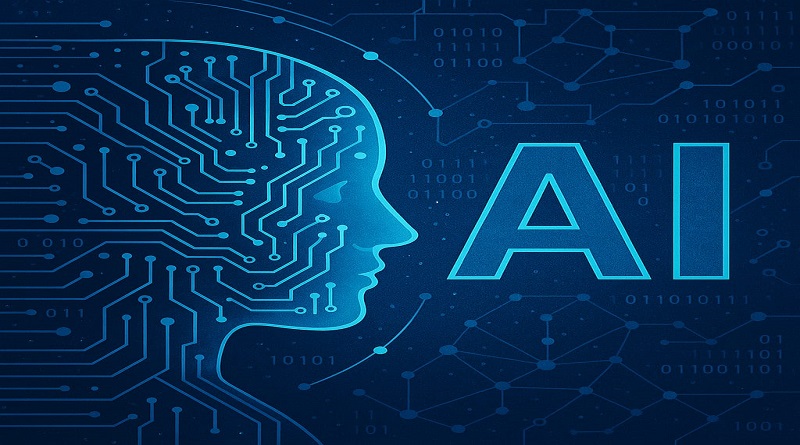Artificial Intelligence (AI)- Futuristic Aspect of the world.
Getting the Inside on AI: It’s Simpler Than You Think
Imagine teaching a machine to think and act like we do. That’s the essence of Artificial Intelligence (AI)—machines that can figure things out, solve problems, and make decisions independently. It’s like giving them the ability to learn from information, understand human-like reasoning, and even communicate in our language. Today, AI isn’t just a concept; it’s part of our daily lives. Whether it’s Chat GPT, systems that recognize objects in photos, or virtual assistants helping with tasks, AI is everywhere. It makes us wonder if we’re nearing the creation of machines as intelligent as humans.
The Backstory of AI: From Old Ideas to New Tricks
The journey of AI began long before it became the powerhouse it is today. In 1956, John McCarthy coined the term “Artificial Intelligence,” but the idea had been simmering since the 1950s when Alan Turing posed the question: “Can machines think?” Early AI systems were rule-based, struggling with complex tasks. Over time, researchers turned to the human brain for inspiration, developing neural networks and machine learning algorithms that could learn from data. By 2012, AI was making leaps—recognizing images, translating languages, and even driving cars. Robots, once limited to repetitive factory tasks, now learn from their environments, adapting to new challenges.
The Cool World of AI: How It Works and Where It’s Going
AI’s influence stretches far beyond science fiction. It’s transforming industries and reshaping how we work, learn, and interact. From aiding doctors in diagnosing diseases to powering self-driving cars, AI’s ability to learn and adapt sets it apart. It’s like having a super-smart assistant that understands your needs, identifies patterns in massive data sets, and evolves over time. Imagine AI helping in healthcare—identifying cancer early, enhancing factory efficiency, personalizing shopping experiences, and even creating music or art. Its applications are vast and growing.
The Different Flavours of AI: How Smart Are They?
But AI isn’t a one-size-fits-all technology. There are different types, much like cars vary from sports models to family SUVs. Narrow AI specializes in one task, like voice assistants or recommendation systems. Then there’s General AI, still in the realm of research, designed to think like a human. And the futuristic Super AI, more intelligent than any human, remains a concept in sci-fi. AI operates in various ways—some react to current events, others remember past interactions, some interpret emotions, and the most advanced aim to understand self-awareness.
What’s the Point of AI? What’s It Trying to Do?
The purpose of AI goes beyond performing tasks. It’s about problem-solving, understanding complex data, predicting outcomes, and improving decision-making. It learns from experiences, adapts, and even generates new content. The ultimate goal? To create AI that can perform any intellectual task a human can, enhancing productivity and fostering collaboration between humans and machines.
AI: Not Just a Buzzword, It’s Changing Everything
Think about how much stuff around us is changing—not just the gadgets, but how we do our jobs, how doctors help people, even how we buy things. AI is the driving force behind it all. It’s not just some fancy idea anymore; it’s here, making a real difference. Imagine robots helping scientists discover new things faster or doctors using computers to find diseases early. That’s AI—like having a super-smart helper that can process tons of information and make smart choices.
The Good and the Not-So-Good: What AI Means for Us
Of course, it’s not all sunshine and rainbows. With all this new tech, there are concerns about job losses as machines take over tasks traditionally done by humans. There’s also the issue of bias—if AI learns from biased data, it will make unfair decisions. But the good side is significant: doctors find new ways to help people, robots assist the elderly, and surgeries become safer. AI also improves healthcare access in underserved areas. We need to be mindful of how we use AI, ensuring fairness and ethical practices.
The Big Need for AI Skills, and How You Can Get Them
As AI evolves, so does the demand for skilled professionals. Knowledge in machine learning, natural language processing, and AI ethics is in high demand, but there’s a skills gap. The good news is that online courses, coding boot camps, and AI training programs are making it easier to learn. Whether you’re just starting or looking to advance your career, learning programming languages like Python, exploring AI tools, and participating in projects can set you apart.
What’s Next for AI, and Why It Matters
The future of AI is exciting. We’re talking about quantum computing, generative AI capable of creating art and music, and AI’s role in space exploration. As AI becomes more integrated into society, the focus will shift toward human-AI collaboration. We’ll want to understand how machines make decisions and ensure they’re used responsibly.
The Problems with AI: And How to Fix Them
Despite its potential, AI comes with challenges. There’s a shortage of professionals with the right skills, and understanding AI concepts can be complex. Plus, ensuring AI safety and ethical use is crucial. We need comprehensive education, clear regulations, and ethical frameworks to address these issues.
Keeping an Eye on AI: Humans Are Still in Charge
AI is powerful, but human oversight remains essential. It’s vital to monitor AI systems to prevent biases and unintended consequences. Regulations and accountability measures will ensure AI benefits everyone, not just tech giants.
The Future of AI: It’s Up to Us
AI is reshaping the world, and its future is in our hands. We need to educate ourselves, support ethical AI projects, and advocate for responsible development. AI isn’t just about machines; it’s about us. Together, we can harness its potential to create a future that’s innovative, fair, and beneficial for all.
Conclusion: – Good Things and Bad Things happens together with AI.
Imagine machines that can think and learn, almost like people. That’s what we call Artificial Intelligence, or AI. It’s about computers doing things we usually need people for. And like most things, it has good sides and bad sides.
On the good side, AI can make things faster and better. It can help us make fewer mistakes, because machines don’t get tired or make silly errors. Think of it like a super-smart helper that works all the time. It can make things easier, like when your phone suggests movies you might like, or when stores know what you want to buy.
But it’s not all good. Machines don’t have feelings like we do. They can’t understand when you’re sad or happy. And they’re not creative like people. It’s like having a really smart friend who doesn’t understand jokes.
Also, if we let machines do everything, we might stop thinking for ourselves. We could become lazy. And machines might take away jobs from people, which is a big problem.
Then there are worries about privacy. If machines know too much about us, it’s not safe. And sometimes, machines can make bad choices because they learn from bad information. People might also use AI to make fake videos or spread lies.
So, AI is like a powerful tool. It can help us a lot, but we need to be careful. We need to find a way to use it without losing what makes us human. We want machines to help us, not replace us. It’s a big question, and we need to figure it out together.
Disclaimer: The content in this article is for informational purposes only. KanoonKiBaat does not intend to defame, harm, or cause damages to any individual, organization, or entity. KanoonKiBaat is not responsible for any claims, damages, or legal actions arising from the use of this information. KanoonKiBaat will not be held liable for any consequences resulting from the use of this content.
Always seek professional legal advice before making any decisions based on this information.





